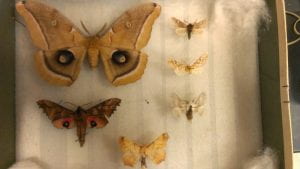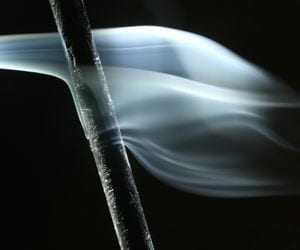 This study all started because I was really bad at catching butterflies. Originally, I was interested in how butterfly wings keep dust and other particles off their wings. However, my first attempts to catch the dynamic fliers with a home-made butterfly “net” ended with me falling into the creek instead. Dripping and disappointed, I wandered back home with my two butterflies (not nearly enough for statistical relevance) to find almost one hundred moths darting around our porch light. Naïve to the nuances of Lepidoptera, I caught some of the moths to study. It turns out that those innocent moths have an incredible external olfactory (sense of smell) system, aka their antenna. Over the next few years, I learned not only the MANY differences between moths and butterflies, but also how moth antenna are shaped to capture really, really small particles better than previous theoretical studies would predict. This lead to a highly technical and very math heavy (because, who doesn’t love differential equations) paper we published in the prestigious Journal of Fluid Mechanics describing how angled cylinders like a moth has can enhance capture efficiency.
This study all started because I was really bad at catching butterflies. Originally, I was interested in how butterfly wings keep dust and other particles off their wings. However, my first attempts to catch the dynamic fliers with a home-made butterfly “net” ended with me falling into the creek instead. Dripping and disappointed, I wandered back home with my two butterflies (not nearly enough for statistical relevance) to find almost one hundred moths darting around our porch light. Naïve to the nuances of Lepidoptera, I caught some of the moths to study. It turns out that those innocent moths have an incredible external olfactory (sense of smell) system, aka their antenna. Over the next few years, I learned not only the MANY differences between moths and butterflies, but also how moth antenna are shaped to capture really, really small particles better than previous theoretical studies would predict. This lead to a highly technical and very math heavy (because, who doesn’t love differential equations) paper we published in the prestigious Journal of Fluid Mechanics describing how angled cylinders like a moth has can enhance capture efficiency. 
